Are you a bird owner looking for the best diet for your feathered friend? With so many options available, it can be overwhelming to decide between pellets and seeds. Both have their pros and cons, and ultimately, the decision should be based on the individual needs of your bird.
In this article, we will explore the benefits and drawbacks of pellet and seed diets for birds, as well as how to supplement and transition between them. By understanding the differences between these diets, you can make an informed decision and provide your bird with the best possible nutrition.
So let’s dive in and discover the pros and cons of pellets and seeds for your avian companion.
Key Takeaways
– Both pellets and seeds have their pros and cons, and the choice should be based on individual bird needs.
– Pellets provide complete nutrition but may be expensive and some birds may not enjoy the taste or texture.
– Seeds are more natural for birds to eat and are usually cheaper, but do not provide complete nutrition and can lead to health problems.
– Fresh fruits and vegetables should be incorporated, calcium sources are important, and different bird species have different dietary requirements. Consulting with a veterinarian or avian specialist is crucial for determining appropriate feeding schedules.
Pros and Cons of Pellet Diets
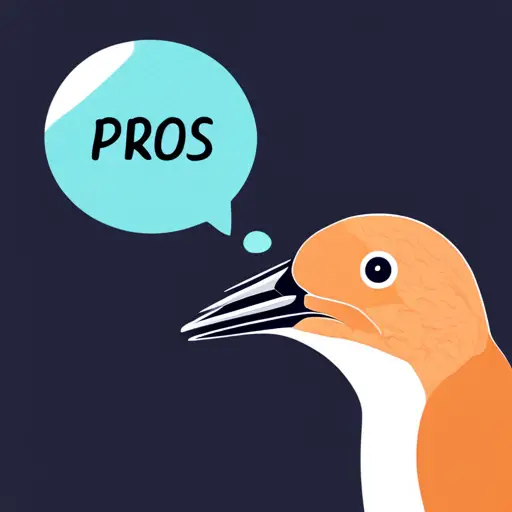
If you’re considering a pellet diet for your feathered friend, there are both benefits and drawbacks to keep in mind.
One of the biggest benefits of pellets is their nutritional value. Compared to seeds, pellets contain a wider range of essential vitamins and minerals that are important for your bird’s health. Additionally, pellets are typically fortified with amino acids and other nutrients that may not be present in a seed-based diet.
However, there are also some drawbacks to feeding your bird a pellet diet. One major concern is that pellets can be quite expensive, especially if you opt for high-quality brands. Additionally, some birds simply don’t enjoy the taste or texture of pellets, and may refuse to eat them altogether.
It’s also worth noting that pellets are not a natural food source for birds, so some experts argue that a seed-based diet may be more appropriate for certain species. Speaking of which, let’s take a look at the pros and cons of seed diets.
Pros and Cons of Seed Diets
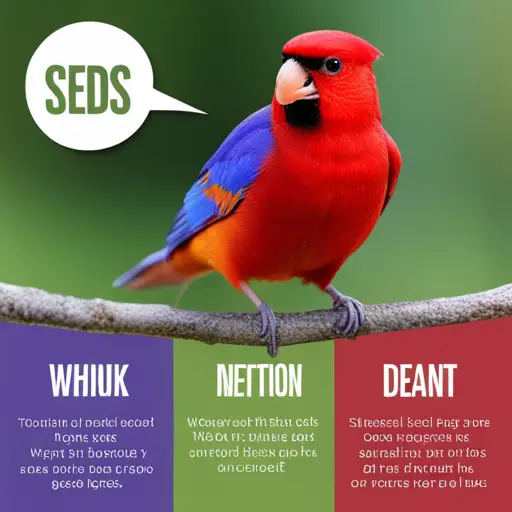
Going for the seed diet may have its advantages and disadvantages. One of the main advantages is that seeds are more natural for birds to eat since they are their primary source of food in the wild. Additionally, seeds are usually cheaper than pellets, making them a more cost-effective option for bird owners.
However, seed diets also have their downsides. Unlike pellets, seeds do not provide complete nutrition for birds. They often lack essential vitamins and minerals that birds need to maintain optimal health. This can lead to health problems such as malnutrition, obesity, and an increased risk of disease.
Moreover, birds on a seed diet tend to be picky eaters, which can make it difficult to ensure that they are getting all the necessary nutrients. Bird owners may also end up spending more money in the long run if their birds develop health problems that require veterinary care. Therefore, while seeds may be a good option for bird owners on a budget, it’s important to supplement your bird’s diet with other nutritious foods to ensure their overall health and wellbeing.
Transitioning to the next section, supplementing your bird’s diet with fresh fruits and vegetables is a great way to ensure that they are getting a well-rounded diet. By doing so, you can provide your bird with additional nutrients that they may not be getting from their seed or pellet diet.
Supplementing Your Bird’s Diet
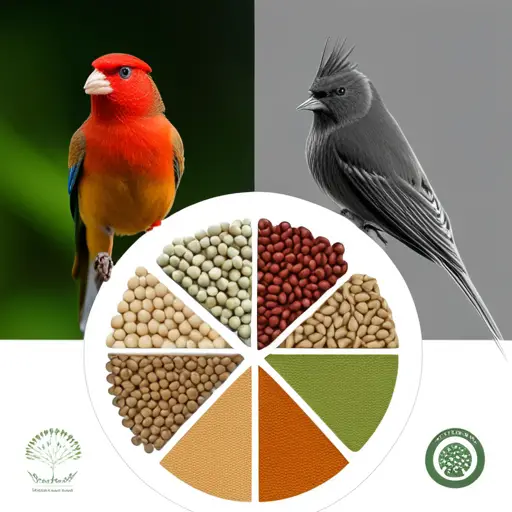
One way to ensure that your feathered friend gets a well-rounded diet is by incorporating fresh fruits and vegetables into their meals. Not only do these foods provide essential nutrients, but they also add variety to your bird’s diet, making mealtime more enjoyable for them. Some great options to consider include leafy greens, carrots, berries, and even small amounts of citrus fruits.
In addition to fresh foods, it’s important to include calcium sources in your bird’s diet. This mineral is essential for healthy bones and egg production in female birds. Some great sources of calcium include calcium-rich vegetables like broccoli and kale, as well as cuttlebone, mineral blocks, and crushed eggshells. By incorporating fresh foods and calcium sources into your bird’s diet, you can ensure that they are getting all the nutrients they need to thrive.
As you consider transitioning between diets, it’s important to make changes gradually to avoid upsetting your bird’s digestive system.
Transitioning Between Diets
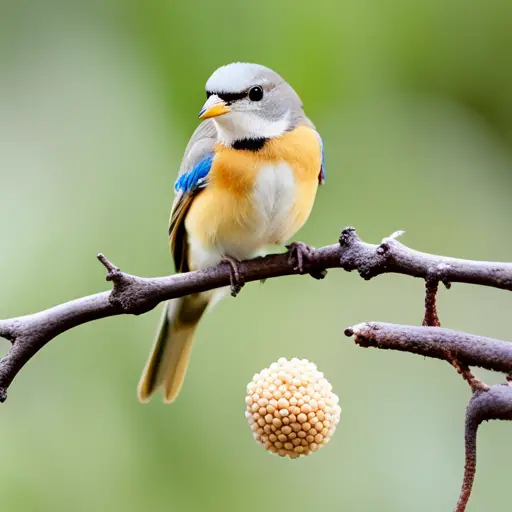
To smoothly transition your feathered friend between their old and new diets, you should gradually mix in the new food with their old diet, remembering the adage ‘slow and steady wins the race.’ Introducing new foods too quickly can cause digestive upset, and abrupt changes can cause your bird to refuse the new food altogether.
Start by mixing a small amount of the new food with your bird’s old diet, gradually increasing the ratio of new to old over several days or even weeks. Here are some things to keep in mind as you make the gradual adjustment:
1. Be patient and consistent in your approach, taking cues from your bird’s behavior and appetite.
2. Offer a variety of foods to ensure your bird is getting a balanced diet.
3. Don’t be discouraged if your bird initially refuses the new food; it may take several attempts before they accept it.
4. Monitor your bird’s weight and overall health during the transition period.
As you consider your bird’s individual needs, it’s important to remember that every bird is unique and may have specific dietary requirements. By taking a gradual approach and monitoring your bird’s response, you can ensure they’re receiving the nutrients they need to thrive.
Considering Your Bird’s Individual Needs
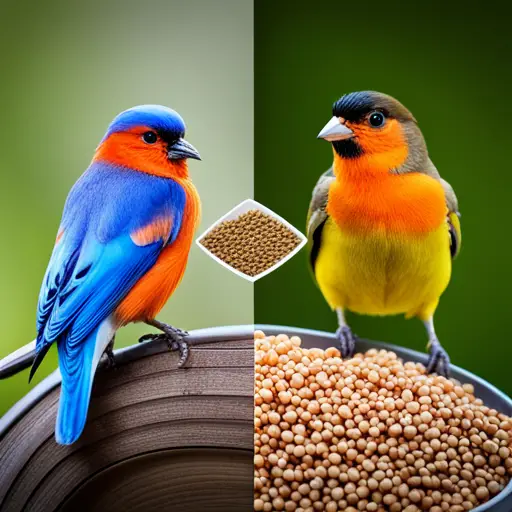
When considering your bird’s individual needs, there are three key points to keep in mind. First, you need to consider their species and size, as different birds have different dietary requirements.
Second, their age and health conditions can also impact their dietary needs. And finally, you should take into account their personal preferences and habits when deciding on a diet.
By considering these factors, you can ensure that your bird is getting the nutrition they need to thrive.
Species and Size
As a bird owner, you may be wondering how to choose the right diet for your feathered friend based on their species and size. Different bird species have different dietary requirements, so it’s important to do your research and choose a diet that is appropriate for your bird.
For example, some birds, like parrots and cockatiels, require a diet that is high in fat and protein, while others, like canaries and finches, require a diet that is high in carbohydrates and fiber.
When it comes to size, it’s important to choose a diet that provides appropriate portions for your bird. A good way to determine the appropriate portion size for your bird is to consult with your veterinarian or a bird nutrition expert. They can help you determine the right amount of food to feed your bird based on their size and dietary needs.
Additionally, it’s important to monitor your bird’s weight and adjust their diet as needed to ensure that they are maintaining a healthy weight.
As you move on to considering your bird’s age and health conditions, it’s important to keep in mind the dietary needs of your bird and how they may change over time.
Age and Health Conditions
Did you know that your bird’s age and health conditions can have a significant impact on their dietary needs? As birds age, their nutritional requirements change. Young birds need more protein and calcium to support their growth and development, while older birds require less protein and more fiber to help maintain their health.
It’s important to consult with your veterinarian or avian specialist to determine the appropriate feeding schedule for your bird based on their age and overall health. In addition to age, your bird’s health conditions can also affect their dietary needs. For example, birds with certain medical conditions may require a specialized diet that is low in fat or high in certain vitamins.
It’s important to work closely with your veterinarian to ensure that your bird is receiving the proper nutrition to support their health and well-being. By taking your bird’s age and health conditions into consideration, you can provide them with a diet that meets their unique nutritional requirements.
As you consider your bird’s dietary needs, it’s also important to take into account your own personal preferences and habits.
Personal Preferences and Habits
Now that you know how age and health conditions affect a bird’s diet, let’s talk about your personal preferences and habits.
Just like humans, birds have their favorite foods too, and it’s important to consider what they enjoy eating when choosing their diet.
Some birds may prefer seeds over pellets, while others may enjoy the variety that pellets offer. It’s important to observe your bird’s eating habits and preferences to make sure they are getting the proper nutrients from their diet.
In addition to considering your bird’s favorite foods, it’s also important to establish a feeding schedule that works for both you and your bird.
Birds thrive on routine, so it’s important to establish a consistent feeding schedule to help them feel safe and secure.
Whether you choose to feed your bird in the morning, afternoon, or evening, make sure you stick to the same schedule every day.
This will also help ensure that your bird is getting the appropriate amount of food each day, as overfeeding or underfeeding can cause health issues for your feathered friend.
By taking into account your bird’s favorite foods and establishing a consistent feeding schedule, you can help ensure that your bird is happy and healthy.
Conclusion
Congratulations! You’ve made it to the end of the article and now you’re armed with knowledge about the pros and cons of pellet and seed diets for your feathered friend.
Now, it’s time to make a decision about which diet is best for your bird. If you’re looking for convenience and a balanced diet, pellets might be the way to go. But if you want to offer your bird a more natural diet with variety, seeds might be your best bet.
Remember, no matter what diet you choose, it’s important to supplement it with fresh fruits and vegetables. And don’t forget to consider your bird’s individual needs when making your decision.
With the right diet and care, your bird will thrive and bring you joy for years to come.
